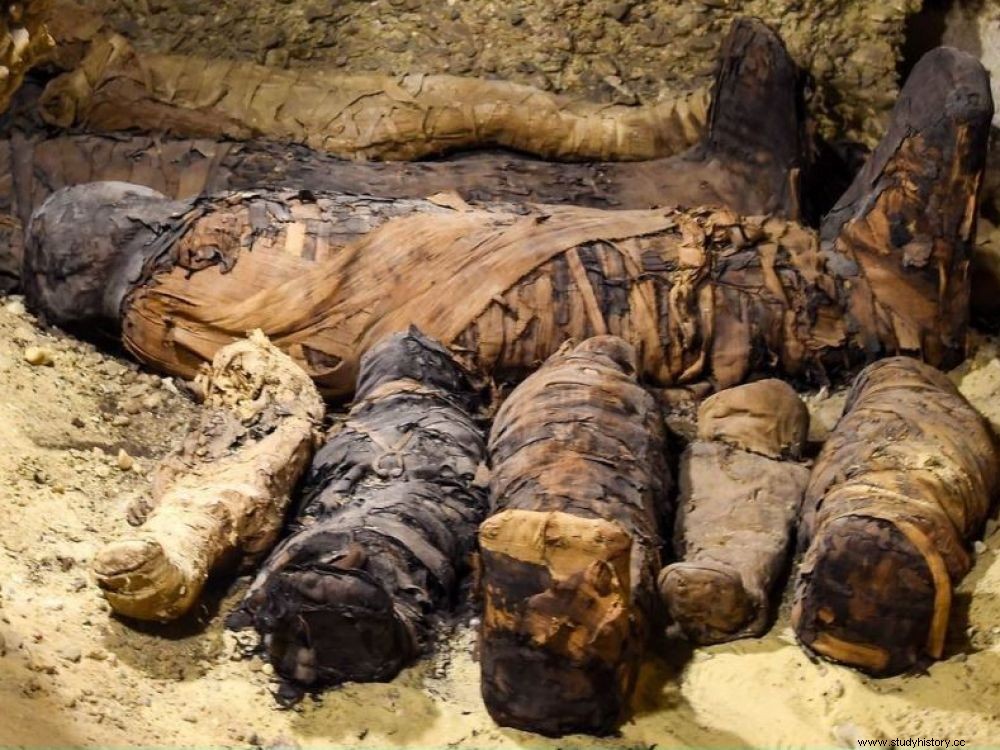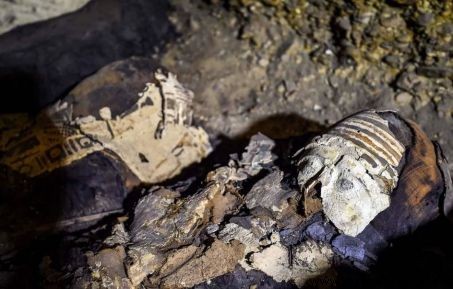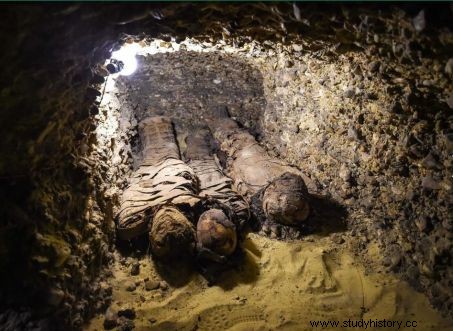They are more than 2000 years old, but are "in good condition":more than 40 mummies dating from the Ptolemaic period, dynasties of Greek origin (323 to 30 BC), have been unveiled with great fanfare in catacombs in Egypt by the Ministry of Antiquities.

Mummified bodies of men, women, children and a few animals were discovered in a family tomb from the Ptolemaic period on the site of Tuna el-Gebel, south of Cairo (Egypt).
It was in front of an audience of around forty diplomats invited with their families, that on Saturday February 2, 2019, Mr. Khaled El-Enany, Minister of Egyptian Antiquities, in a now well-oiled show, presented the first archaeological discoveries of the year 2019.
Mummies wrapped in linen or decorated with demotic writing
To contemplate them, you have to take a thin ladder and descend a nine-meter narrow stone tunnel. Beneath the sandy soil of the archaeological site of Tuna el-Gebel in Minya (Tounah el-Gebel), Middle Egypt (center), south of Cairo, a vast room gives access to several tiny rock-cut chambers. This same necropolis where in April 2017, other series of mummified bodies had already been unearthed, as relayed by Sciences et Avenir .
 Remains of painted cardboard still adorned some mummies. Credits:Mohamed EL-SHAHED /AFP
Remains of painted cardboard still adorned some mummies. Credits:Mohamed EL-SHAHED /AFP
Inside, brownish mummies are laid on the ground or placed in open coffins made of white clay. Of different sexes and sizes, they are wrapped in linen or decorated with demotic writing, an ancient Egyptian language. Some still bear fragments of colored cardboard, a material used to make funerary masks.
 Twelve children and six animals were identified among the burial remains. Credits:Mohamed EL-SHAHED / AFP
Twelve children and six animals were identified among the burial remains. Credits:Mohamed EL-SHAHED / AFP
A tomb of the "petty bourgeoisie"
According to the Egyptian Ministry of Antiquities, men and women, children and even pets have been discovered in a family tomb belonging to "the petty bourgeoisie" from the Ptolemaic period, named after the last reigning pharaonic dynasty. The one of Greek origin, of which the famous Queen Cleopatra VII Philopator (67-30 BC) was the last sovereign before Egypt came under Roman domination. Ostracons - shards bearing writings - and fragments of papyrus were also discovered on the spot, which according to the Secretary General of the Supreme Council of Antiquities, Mostafa Waziri could date some of these burials to the early Roman and Byzantine period.
B.A with AFP
